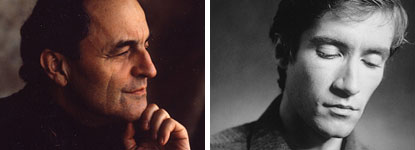On Saturday night, Charles Dutoit conducted the Los Angeles Philharmonic in three works all composed within a period of about 40 years of one another, the Variaciones concertantes by Alberto Ginastera (1953), Concerto for the Left Hand by Maurice Ravel (1931) and Petrushka by Igor Stravinsky (1911).
Because of their relatively close temporal contiguity, all three works have in common certain musical features. Most notably, however, these compositions share a traditional tonality that belies their 20th-century origins. And at least two of the works, the Ravel and the Stravinsky, have a French connection; Ravel was French and Petrushka was premiered in Paris under the direction of a French conductor (Pierre Monteux).
The program at Disney Hall began with a brisk, tight and beautifully rendered version of Ginastera’s Variaciones concertantes, a work for chamber orchestra, including strings and a small complement of woodwinds (two flutes, oboe, two clarinets, bassoon, two horns), brass (trumpet, trombone), timpani, and harp. The reason for the abbreviated woodwind and brass sections is that each of the variations features a solo instrument beginning with the cello (accompanied only by the harp) and ending with the double bass (again accompanied by the harp). In between, all of the individual woodwind and brass players are featured.
The work combines hauntingly beautiful passages with dance-like romps and is surprisingly tonal with most of the variations concluding on a major chord. Each of the L.A Phil soloists displayed his or her musical prowess to perfection.
The Concerto for the Left Hand featured the relatively young Russian pianist Nikolai Lugansky whose playing was very refined and lyrical, but lacked the dynamic range to compete with the orchestra, at least as rendered by Dutoit. Moreover, at times, the orchestra completely overwhelmed the piano; and at those times, were it not for the fact that the audience could see Lugansky’s hand on the keys, it would have been impossible to tell he was playing.
In this concerto, Ravel uses the sustain pedal extensively to create the overtones that help to make one hand sound like two. That effect combined with the lushness of this extended one-movement work results in a piece that is understandably popular.
The concert concluded with Petrushka, composed by Stravinsky and premiered in 1911. The work, like The Firebird and The Rite of Spring, is an orchestral showcase, and in performing it, the L.A Phil certainly showed its musical heft and why it is a world-class orchestra.
Although Dutoit led the orchestra ably and admirably, it was not a mesmerizing performance. The problem might have been trying to delicately balance the demands of a large-scale, sonically rich orchestral work with the finicky acoustics of Disney Hall. Or, perhaps I’ve just been spoiled by the 1959 RCA recording by Monteux with the Boston Symphony Orchestra. Still, it was a delight to hear this work performed by the L.A. Phil in Disney Hall.







great revue of the Charles Dutoit concert with the LA Phil at Disney Hall.